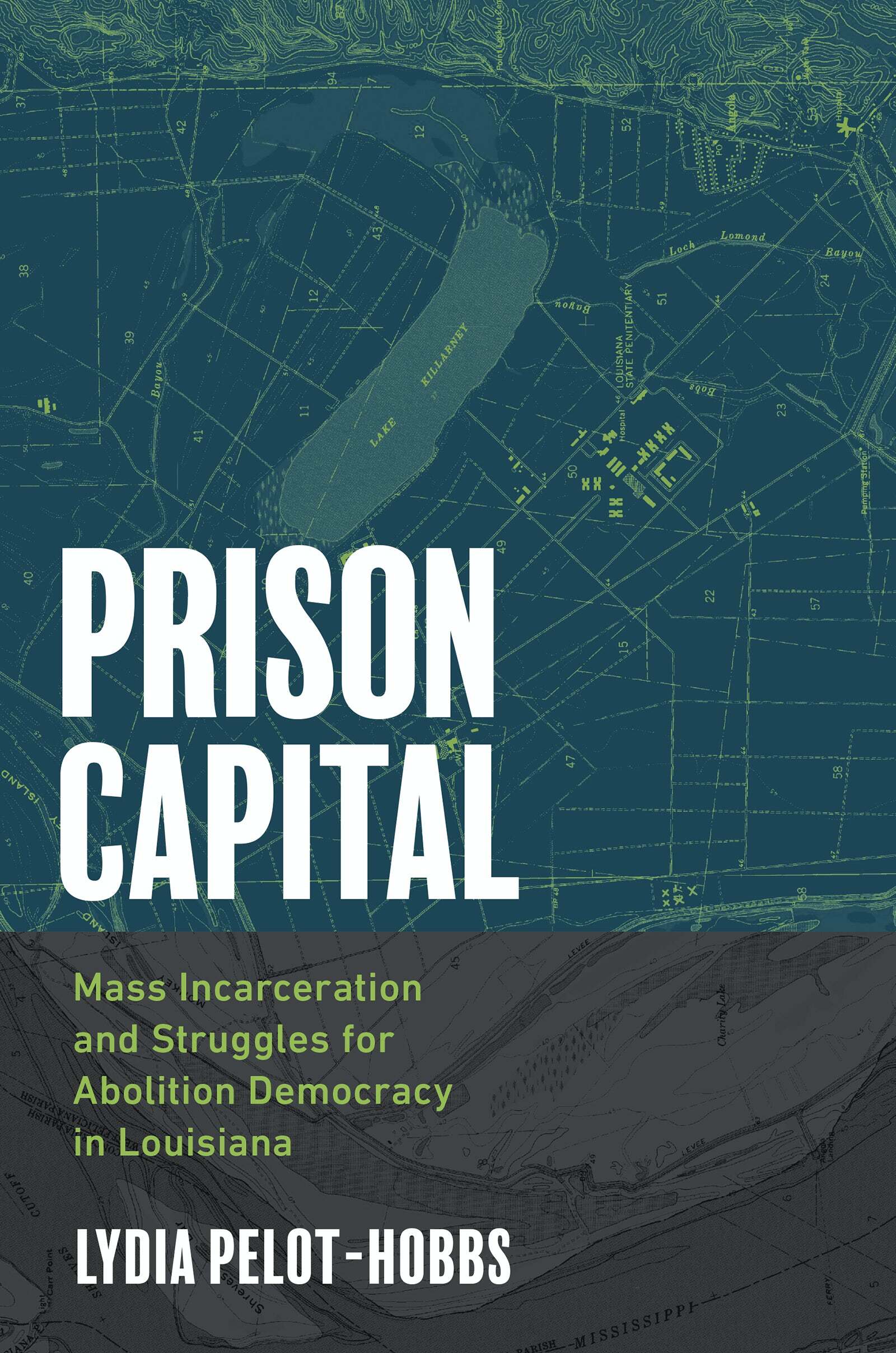On the afternoon of February 3, 2011, more than a hundred Orleans Parish Prison Reform Coalition (OPPRC) members and supporters filled New Orleans City Council chambers to demand a cap on the prison’s size. A buzz was in the air as activists opposed Sheriff Marlin Gusman’s proposal to leverage millions in FEMA funds to expand the jail closer to its pre-Katrina size.
During the public comment period, speakers implored the council to back the proposed jail cap of 1,438 beds, arguing that reinvesting in jail expansion would repeat the racist, punitive practices that had created everyday crises for New Orleanians long before the levees broke. The city council aligned with OPPRC over Gusman and voted in favor of the bed cap. This meant that by 2012, Orleans Parish Prison (OPP) would have less than half the beds it did in 2010—an 80 percent cut to the jail’s total size since Hurricane Katrina. It was a victory that was the result of years of organizing to undo the carceral logics that had dominated decades of New Orleans governance.
In the first months after Hurricane Katrina, right at the beginning of New Orleans’s rebuilding process, the sentiment that the criminal legal system was in crisis was shared across the political spectrum. However, there was no agreement on how the system should be reformed. Three trajectories were advocated.
The first potential path—endorsed by city government officials such as Mayor Nagin, the NOPD leadership, and Sheriff Gusman—urged the expansion of carceral infrastructures: indefinite deployment of the Louisiana State Police and National Guard, intense crackdowns on migrant workers, and a rebuilding of OPP as quickly and as big as possible. They claimed not only that New Orleans law and order was necessary for recovery, but also that this crisis was an opportunity to banish the so-called criminal element from New Orleans for good.
The second path forward was advocated by many city council members, good government groups, and other liberal elites. They agreed that the New Orleans criminal legal system was broken, and now was the time to modernize the system to bring it more in line with other cities. Those holding this position advocated for moderate reforms such as creating a day reporting center—a non-residential “supervision and treatment program” as an alternative to incarceration centers—as well as adequately funding indigent defense and improving conditions in adult and youth jails.
A third path was proposed by grassroots organizations such as the Juvenile Justice Project of Louisiana (JJPL), Critical Resistance, and the nascent Safe Streets/Strong Communities. Their position was that it was a critical moment to push for transformative reforms to the criminal legal system as a strategy of dismantling the systemic racism and classism that produced the Katrina crisis. This approach involved not only fighting back against law-and-order interventions but also being proactive in organizing for the creation of new policies and institutions.
The main vehicle for this activism was the reenergized OPPRC. The group was originally a coalition made up of progressive Christians, criminal defense attorneys, advocacy nonprofits such as the ACLU, and others involved in rehabilitative jail programs. OPPRC was founded to pressure candidates to make commitments to reforming conditions of confinement and ensuring that legal and constitutional standards were followed during the 2004 sheriffs’ race. OPPRC held candidate forums and succeeded in getting every candidate, including Gusman, to sign onto their platform of improving jail conditions.
More from our decarceral brainstorm
Every week, Inquest aims to bring you insights from people thinking through and working for a world without mass incarceration.
Sign up for our newsletter for the latest.
Newsletter
But after Hurricane Katrina, OPPRC underwent a renewal. Safe Streets’ jail campaign work was channeled into the coalition. Soon advocacy mainstays like the ACLU, the Vera Institute, and faith-based organizations were joined by multiracial grassroots organizations such as Safe Streets, VOTE, Critical Resistance, and the Congreso de Jornaleros. This widened the coalition’s perspectives and reach. OPPRC’s political orientation and priorities also shifted post-Katrina. According to founding member Don Everard:
The original group . . . really did not address the size of the jail. We were more concerned about specific things that maybe you could tinker with to make it more humane and to make it more effective, but it wasn’t really challenging the size of it. But then, that became the issue. I mean, once the jail had shrunk a small amount, and the city didn’t fall apart, I think it was pretty damn clear that we didn’t need a jail that big anymore.
Pivotal to the functioning and effectiveness of OPPRC was its codified coalition structure. Initially the coalition operated relatively informally: people could drop in and out of coalition meetings, and the presumption of unanimity structured discussions. When Kai Barrow moved to New Orleans in 2010, she not only facilitated the Critical Resistance New Orleans chapter to join OPPRC but she also contributed her years of experience in horizontal organizing to the coalition. Barrow worked with Dana Kaplan of the Juvenile Justice Project of Louisiana (JJPL) to shepherd OPPRC in adopting a more formal structure: developing points of unity on its politics and principles, outlining rights and responsibilities of different tiers of coalition members, and putting in place consensus as the decision-making structure. These systems created containers of accountability and guidelines for working through sticky political questions, ensuring that OPPRC was governed by greater democratic participation and a smoother process.
For Barrow and some other abolitionists in the mix, implementing this structure for OPPRC was also politically strategic. Barrow knew coming into OPPRC that CR as a small ragtag group of abolitionists might be sidelined by the legal nonprofits in the room. She recalled thinking: “We’re going to be the odd people out if we just agree [to majority voting] because we’re not part of this network. We are not going to be valid and legitimate in this coalition and therefore our voices will be silenced.” To ensure that CR’s abolitionist position was not marginalized, Barrow advocated for a consensus decision-making structure. Although a consensus structure would not transform OPPRC into an abolitionist project, it kept an abolitionist edge alive within the coalition and pushed public conversations on the jail further to the left.
Indeed, OPPRC’s very first political point of unity guiding the coalition was not about conditions of confinement, but rather scale: “We recognize that New Orleans has the most number of prisoners, per capita, nationwide and are working to minimize the jail population.” By bringing to the forefront the need to shrink the jail population, OPPRC suggested that meaningful reform could not be achieved without scaling back mass incarceration.
OPPRC’s campaign heated up when FEMA announced it was allocating nearly $100 million to rebuilding OPP, and Gusman declared his plans to expand the jail to 5,862 beds. Although this represented a decrease from OPP’s pre-Katrina capacity of almost 7,200 beds, Gusman’s proposal would have added more than 2,000 new beds to OPP’s 2010 capacity, and he saw this expansion as the first step to increasing OPP to 8,000 beds. Gusman contended that the city needed an enlarged jail complex to “protect the lives and property of our city residents.”
However, Gusman’s proposal had to be approved by the city’s zoning process. The mundane processes of land use presented a political opportunity for OPPRC. Cielo Cruz explained, “We felt like we could control the number of beds” because “when it came to zoning and things that city council had control over, we felt like we had a much better chance” than if Gusman had final say.
It first appeared that the city council might acquiesce to Gusman’s jail proposal. During the summer of 2010, when council members voted on Gusman’s plan, OPPRC activists showed up to contest the expansion—asking why the city was quick to reinvest in jailing when affordable housing, public education, and mental health care were all but forgotten. Although the council then voted 7–0 to approve Gusman’s plan, they also added twenty-four provisions qualifying its approval. One provision held that before the council would vote to give the jail’s zoning full legal force, they were to hear recommendations on the jail’s ideal size from a mayoral Criminal Justice Working Group. This announcement gave OPPRC organizers grounds for both trepidation and hope. Although it was promising that city leaders were not simply going along with Sheriff Gusman’s proposal, the composition of the Criminal Justice Working Group was skewed toward members of the carceral state: It included Sheriff Gusman himself, NOPD superintendent Ronal Serpas, and Orleans Parish DA Leon Cannizzaro. Overall, though, OPPRC saw the creation of the Criminal Justice Working Group as a positive development. If nothing else, it would give them more time to organize.
Even though the jail’s bed space had already been cut in half since Hurricane Katrina, OPPRC aimed not only to keep Gusman from expanding OPP but also to downsize the jail even more. OPPRC’s members routinely pointed out that at 3,500 beds OPP was already the largest per capita jail in the nation. Yet how large the jail should be was never a clear-cut issue within the coalition. Most members of OPPRC believed they should push for a cap on the number of beds, whereas CR wanted to press for zero beds. While CR always knew they would have to compromise on this vision within OPPRC, the consensus decision-making structure steered OPPRC to engage in dialogue about zero beds versus a cap. After much discussion, OPPRC decided to demand a hard cap on OPP’s size—not only for this construction project but also going forward. But what should the cap be? Researching the size of jails in other southern cities as well as in neighboring Jefferson Parish, OPPRC landed on 850 beds as a more appropriate cap for a city of New Orleans’s size.
OPPRC’s strategy to determine the “right size” of OPP illuminated the extent to which the normalization of mass incarceration shaped even activist frameworks. Researching the per capita jailing rate of other locales made sense inasmuch as OPPRC organizers aimed to bring New Orleans within national norms. But it failed to account for how the rise of mass incarceration had caused every major city in the United States to expand the size of its jails over the preceding forty years. Pegging a “right size” for OPP to other cities’ jail sizes implicitly condoned the growth of incarceration elsewhere as a “reasonable” rate of imprisonment—rather than acknowledging how other cities’ jailing rates were also produced through the racist neoliberal logics of urban law and order.
OPPRC’s organizing powered a shift in public discourse. For the first time in decades, newspapers published articles sympathetic to OPPRC’s arguments against a larger jail. The Times-Picayune published an op-ed refuting Gusman’s claims and asserting that the bloated OPP “is not a result of the crime rate. It’s the result of bad policy” and the per diem system. Unlike previous debates, not a single letter to the editor was published in favor of an enlarged jail. One resident unaffiliated with OPPRC wrote to the Times-Picayune to share his view that “we incarcerate way too many people for our size city. We need to solve the core problems, or at least begin addressing them, rather than simply locking more and more people up.”
OPPRC managed to push the Criminal Justice Working Group to hold two public meetings on the rebuilding of the jail in the fall of 2010, but they proved fraught. The working group balked at challenges to their technocratic approach to determining the ideal size for OPP. Deputy mayor Andy Kopplin, the working group’s chair, was visibly disdainful of grassroots activists, going so far as to state at one meeting: “We are not required to have this meeting. You should be glad we’re even here.” Kopplin announced at the beginning of each meeting that the group’s final recommendations would be primarily based on a quantitative study by the JFA Institute research team that the Criminal Justice Working Group believed would focus on current and projected arrest rates.
Even so, OPPRC activists committed to putting a more critical analysis of jailing on the record. When one person challenged arrest rates as a valid unit of measurement, asking whether the Criminal Justice Working Group had considered how racial profiling affected arrests, she was told race was not a relevant factor or up for discussion. Community activists repeatedly repudiated this logic by pointing to the structural connections between racial profiling, state disinvestments in health care and education, the impoverishment of Black communities, and the city’s high jailing rate. Several mothers shared their stories of the emotional and financial toll of having their loved ones locked up. Implicit in these testimonies was that experiential knowledge should be as valuable as the “expert knowledge” of the sheriff, DA, judges, and other city officials. Rather than excluding such information as “irrelevant” or “biased,” such subjective knowledge should be integrated into the Criminal Justice Working Group’s recommendations.
In a surprise turn of events, the JFA Institute’s study on the ideal size of OPP was more aligned with OPPRC’s position than with Gusman. The study, which became known as the “Austin Report,” took a firm stance against using numbers to justify carceral futures: “Inmate and correctional population projections should not be seen as magic boxes used to predict the future, but instead as tools for understanding the origin and direction of prisoner population changes based on current and alternative criminal justice policies.” In contrast to most carceral consultants, lead author James Austin had a track record of publishing work critical of mass incarceration. The report showed that OPP’s population was already declining because of diminishing crime rates, a smaller city population, and recent criminal justice reforms. The Austin Report contended that if Orleans Parish policies were brought in line with those of other Louisiana cities, OPP would be between 722 and 1,426 beds. It went on to show that OPP’s capacity could be reduced by another 1,300 beds if some further moderate reforms were put in place.
Following the public hearings and the Austin Report, the Criminal Justice Working Group recommended that OPP be rebuilt with “a maximum capacity of 1,438 inmates . . . capable of accommodating any type of prisoner under any jurisdiction” and that the five other remaining jail structures “be decommissioned or demolished.” It also recommended that there be an examination of whether people incarcerated by the state and federal government should be imprisoned at OPP, of the appropriateness of the per diem system, and of racial disparities in the length of incarceration of African Americans.
Even as OPPRC recognized that having 1,438 beds meant that OPP would still be 1.7 times larger than the national average, they decided to support this cap. At the final city council vote, OPPRC activists speculated whether the council would abide by the Criminal Justice Working Group’s recommendations or capitulate to Gusman. After an hour of public comment overwhelmingly in favor of the 1,438-bed cap, the council unanimously voted in favor. For the first time in history, it became city policy to scale back, not scale up, New Orleans’s jailing capacity.
This victory did not conclude the struggle, though.
Almost immediately, Sheriff Gusman strategized ways to subvert the cap. In direct opposition to the council decision, the new jail’s design lacked space dedicated to incarcerated medical care. Gusman used this to push the expansion project “Phase III.” Gusman asserted that, without new beds, OPP would be outside federal court guidelines and constitutional mandates for the jail.
Between 2011 and 2023, federal courts have sided with this argument. This is despite the fact that Gusman was ousted from the sheriff’s office in 2021 and the new sheriff, Susan Hutson, officially opposes this new construction. As of this writing, the federal courts are pushing Phase III through despite ongoing protests from grassroots organizations and some elected leaders. This offers a reminder of the long-haul work of fighting against jail expansion.
Yet this is not to downplay the wins forged by anti-jail organizers in the wake of Hurricane Katrina. After years of confronting an intractable city government driven by the goal of building up carceral capabilities, Hurricane Katrina provided an unexpected opening. Yet this political opportunity was not sufficient on its own. It took the strategic efforts of a broad range of activists to build grassroots power and shift some of the guiding approaches and practices surrounding public safety.
Reflecting on that time, Mayaba Liebenthal describes how organizers’ energy mimicked the post-Katrina environment: “After the storm, the ground was very fertile. The trees were growing extra shit, the caterpillars were everywhere, there were watermelons this big. This sort of freak-out moment that nature was having, we were having ourselves. All sorts of new things grew.”
Image: Carol M. Highsmith/Library of Congress
From Prison Capital: Mass Incarceration and Struggles for Abolition Democracy by Lydia Pelot-Hobbs. Copyright © 2023 by Lydia Pelot-Hobbs. Used by permission of the University of North Carolina Press.


